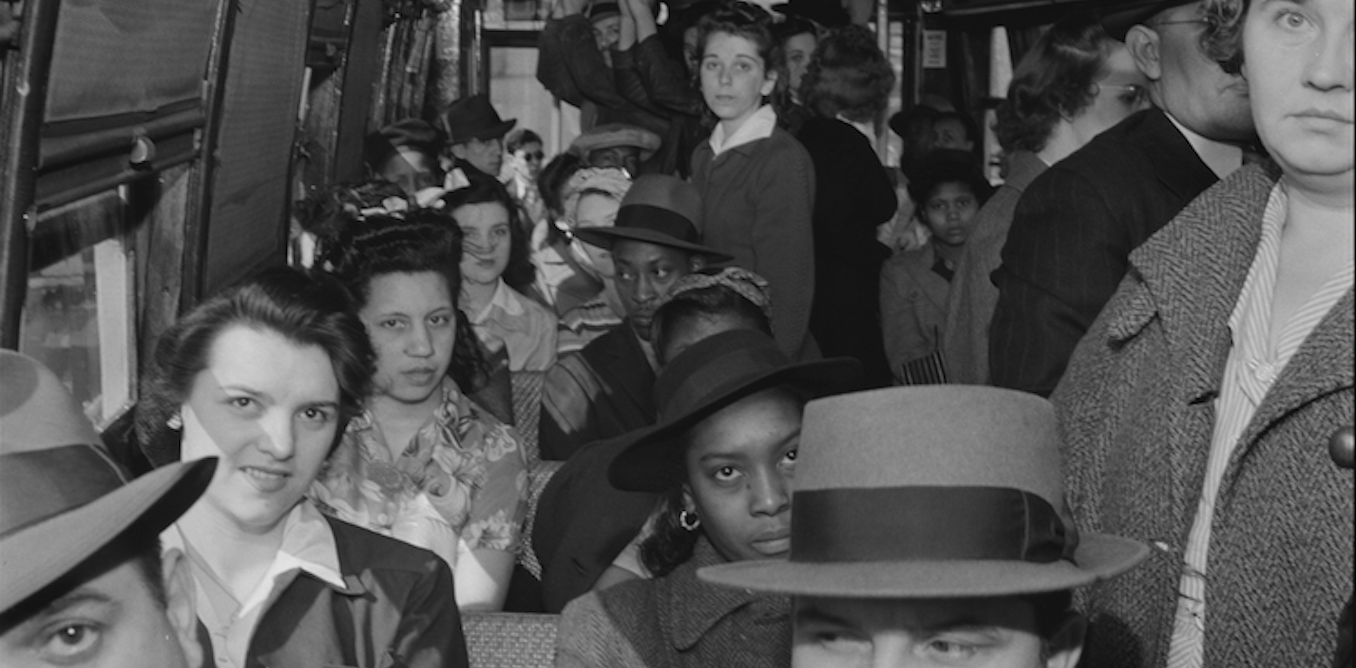Since the 1940s, there has been a broad shift away from public transit across the U.S., and service has declined in many cities, including New York, Boston, Denver, Orlando and St. Louis. A look back at the last national mass transit boom helps explain the challenges that confront modern transit agencies.
Starting in the 19th century, transit companies worked closely with real estate developers to develop “streetcar suburbs” for a growing population. The companies kept fares low, thanks to corporate consolidation, government regulation and thrifty management.
During World War II, producing weapons and supplies for troops fighting abroad became the nation’s top priority. Gasoline, tires and autos were strictly rationed, so most commuters had few ways to get to work other than public transit.
In Baltimore, for example, people could ride a streetcar anywhere in the city in 1943 for 10 cents. With wartime production booming, the city’s Baltimore Transit Company packed customers into every streetcar and bus it could find.
Here and in other racially divided northern and border cities, public transit was an integrated space that was fundamental to social mobility. Tens of thousands of Black workers, part of the Great Migration from southern to northern states, enjoyed access to comparatively excellent citywide networks of streetcars, buses and electric trolleybuses.
After the war, consumer demand and public policy swung the other way. Many white commuters took advantage of the GI Bill, federally subsidized mortgages, an expanding highway network and cheap automobiles to escape mass transit – and the neighborhoods that it served.
Black Americans, in contrast, were largely shut out from access to these benefits. Many remained trapped in decaying urban cores.
By the 1960s, most white riders lived on the urban periphery and were politically opposed to transit expansion and public ownership of transit networks. In response, politicians prioritized improving streets and highways through steps that included removing streetcar tracks and trams to speed up automobile traffic.
For example, Maryland did not take over the financially struggling, privately owned Baltimore Transit Company until 1970 – neglecting an increasingly poor and Black population’s transportation needs.
By 1968, a bus ride cost 30 cents for much lower-quality service. Streetcars were gone, the buses were old or aging fast, and they ran infrequently, with few easy connections to suburban jobs.
Even after Maryland took over the transit system, the state didn’t provide enough funds to make up for decades of disinvestment. In 2020, a study estimated that metropolitan Baltimore commuters had to spend an hour or more on a bus or train to reach 91.5% of regional jobs.
This cycle of decline also occurred in other cities such as Chicago and Atlanta, further driving down ridership. By 2019, just 5% of U.S. commuters typically used public transit. The COVID-19 pandemic reduced this share to 3.1% in 2022.
Transit agencies in some cities, including Washington and Los Angeles, are working to reverse this trend, aided by deep regional subsidies, horrendous traffic and construction of apartment complexes near transit stops. As the harmful effects of car dependence on public health and the environment become increasingly clear, affordable and reliable public transit can still lure riders back onto buses and trains.

The post “A packed Baltimore trolley illustrates the ups and downs of US public transit” by Nicholas Dagen Bloom, Professor of Urban Policy and Planning, Hunter College was published on 08/09/2024 by theconversation.com





































Leave a Reply